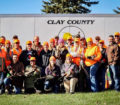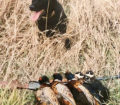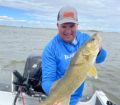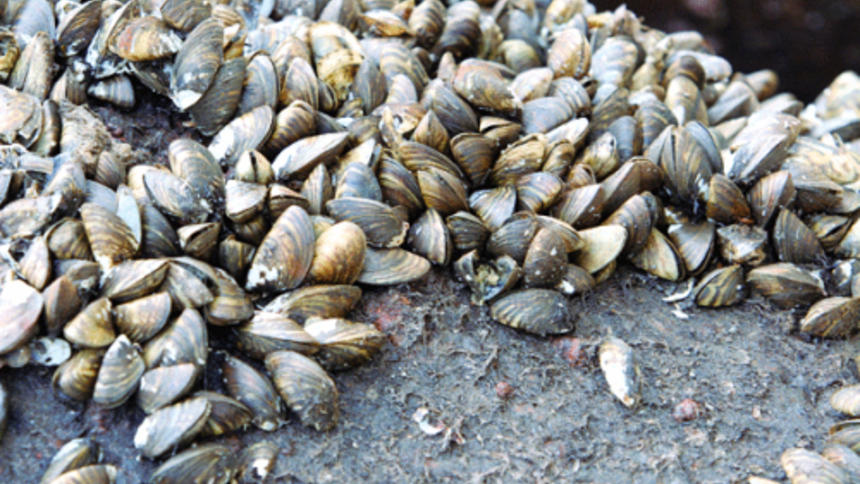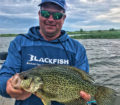By Steve Weisman
The recent cold weather has furharvesters excited because cold weather helps animal furs become better. Called prime, a pelt becomes prime when the fur is at its peak in color, length, density and texture. This is often determined by fur buyers as they judge a fur’s primeness when determining the price the buyer is willing to pay.
Some fur experts like the fur market to the stock market, because it rises and falls just like the stock market. Reasons for this usually ties with the fashion trends (how much fur is used in fashions) and the world market. For the most part, the fur market is down because of over-production of commercial fur in Europe and the depressed economy in Russia.
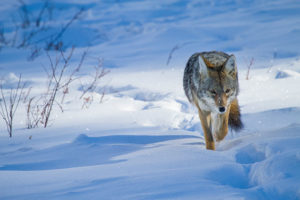 However, one of the hottest furs on the market has been the coyote pelts. According to Marketplace, demand has been on the rise for prime coyote pelts with the fur used for hoods on winter coats, etc.
However, one of the hottest furs on the market has been the coyote pelts. According to Marketplace, demand has been on the rise for prime coyote pelts with the fur used for hoods on winter coats, etc.
Since trapping is popular here in northwest Iowa, I thought I’d reach out to a fur trader and see what pelts will be worth this year. So, I contacted North Iowa Fur Company of Fredericksburg, IA. Family-owned, North Iowa Fur Company has been in the fur business over 50 years, and they do fur pick up routes across the state. Owner Bill Drewelow and his son offer expert grading and possess all the applicable permits to ship worldwide. They are open year round for inspection of furs at their warehouse in Fredericksburg.
According to Drewelow, “Northwest Iowa furs are typically better than furs from the rest of the state. However, they are still not as good as furs coming from the Dakotas and Montana. Prices are always better if the carcass has been skinned and even a little better if the pelt has been stretched and dried.”
When talking about what fur prices will be this winter, Drewelow notes that not all furs are equal. Early winter furs are not yet prime and won’t bring what fur will bring later in the winter. Likewise, the way the fur has been handled will dictate how the fur will grade out. Torn, dirty and bloody pelts will certainly be docked. Here is how Drewelow sees the fur market shaping up for this winter for skinned out furs taken here in northwest Iowa:
- Coyote – The better end will bring $50-$75. Western coyotes from the Dakotas and Montana will bring up to $120 because they are softer to the touch and paler in color.
- Bobcat (need a license/tag-taken in southern tier of Iowa) – The better end will bring up to $60-$70.
- Red Fox – Very little demand with better pelts bringing $10-$15.
- Raccoon – The better end will bring up to $15 with the average pelt bringing $5.
- Muskrat – Average pelt will bring $3 and if stretched and dried, pelts will bring up to $4. Back in the 1920s-1930s, muskrat brought up to $3.
- Badgers – Pelts will bring up to $25.
- Beaver – Larger pelts will bring $10-$15 and there is good call for the beaver castor gland, but it must be cleanly extracted and dried.
- Mink – The demand is very low and even the commercial mink ranches are losing money. Prices will range from $5 to $6 for males and half of that for females.
- Skunks – Pretty good demand with up to $5 to $6 for skinned pelts. However, not a lot of trappers will mess with cleaning them. So, price will be significantly less.
- Possum – Even with the large numbers around, there is no call for the fur.
Routes and pick up dates: Saturdays: Nov 23, Dec 7. 21, Jan 18, Feb 15
Estherville Route – (Old Shopko) building by McDonalds from 8:30 – 9:00 a.m.
Sibley Route – Lynch Livestock from 10:00 – 10:30 a.m.
Sheldon Route – O’Brien County Implement (behind Fareway) from 11:15 – 11:45 a.m.
LeMars Route – Citgo Truck Stop & Restaurant from 12:15 – 12:45 p.m.

